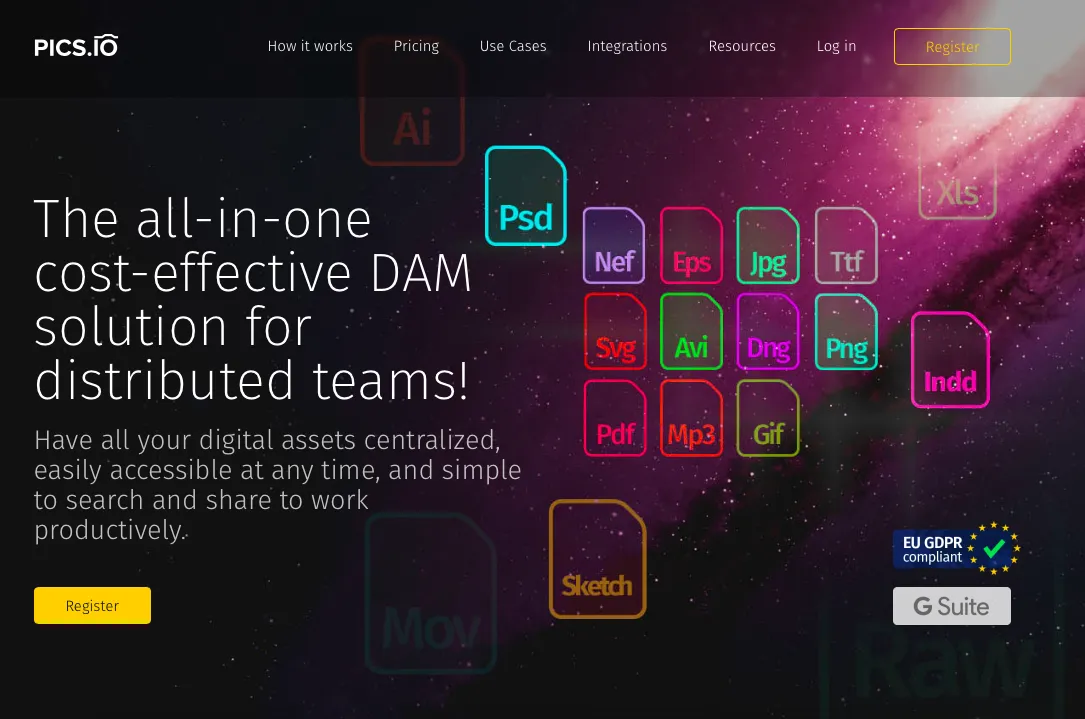In this article, you’ll learn:
Content is generally associated with marketing, but it can also be an important part of sales that shouldn't be overlooked. In fact, 95% of customers choose to buy from providers that offer relevant content at every stage of the buying process.
Offering up compelling content to prospects during the sales process will greatly facilitate the sales rep's job. The right content can quell prospects' their fears, provide social proof, and steer their final decision. It can keep selling the client long after your phone call or email exchange ends and maybe even revive a closed lost opportunity.
But how exactly do you integrate content into the sales process? Here, we’ll show you how to take advantage of “Smarketing” and how to ramp up relevant content throughout every stage of your sales cycle.
Taking Advantage of SMarketing (Sales + Marketing)
Many companies keep their sales and marketing functions separate, but this is a huge missed opportunity. As consumer behavior changes and prospects rely less on sales reps and more on their own research, sales and marketing need to collaborate more closely than ever before.
“SMarketing” is a portmanteau that combines the two words and refers to the fusion of sales and marketing strategies into one integrated approach.
SMarketing unites the two departments to improve qualified leads, promote teamwork, boost revenue and ROI, and increase customer loyalty. In short, SMarketing enhances the customer experience by providing the right information at the right time, and in turn, helps improve company performance.
If your marketing and sales teams are out of alignment and have trouble viewing each other as teammates, your bottom line will suffer. It's crucial for sales and marketing to be on the same page when it comes to defining an ideal lead and understanding how leads move through the sales pipeline.
Sales and marketing teams that work well together will boost efficiency and increase conversions, and a key part of this is producing relevant content for each stage of the buyer's journey.
Incorporating Content into Every Stage of Your Buyer’s Journey

Every prospect goes through some version of the buyer's journey before ultimately making a purchase. How quickly they move through the stages depends on a variety of factors including how relevant the content is at each stage.
The Awareness stage is about attracting prospects and generating their interest. Prospects in this stage realize their problem and are open to solutions. They’ll often do research to understand the issue better, define it in more precise terms, and figure out how other people are solving it.
Educational content like blog posts, how-to content, e-books, case studies, whitepapers, and webinars work exceptionally well here.
The Interaction stage is to convert the audience and convince them of your brand’s value. Buyers in this stage have a clear understanding of their problem and are actively considering multiple potential opportunities.
On-site content, blog posts covering different tips & best practices, datasheets, webinars, and personalized emails are staples for this stage. Anything that’ll help them realize the potential value of your solution works wonderfully.
The Interest stage is when the sales department is ready to close the deal. The buyer has narrowed their selection down to a handful of competitors, and the content you provide will help them make their final decision.
Posts/charts comparing the solution to its competitors, consultations, customer reviews, testimonials, live demos, and free trials reign supreme here.
The Action stage is when the lead has already subscribed, and you have to maintain their interest. SMarketing isn’t complete when the buyer makes their purchase or subscribes. You need to continually reinforce your product or service’s value to create a loyal customer or repeat buyer.
Knowledge base on your website (blog posts, how-to guidelines, help center), newsletters, special offers, and content on new features and services serve you and the customer well here.
Keeping Content Easily Accessible to Your Sales and Marketing Team
It’s not enough to make great content. You have to also make it easily accessible to your customers. To do that, marketing will need a platform to manage your content.
Pics.io is a DAM marketing tool that keeps your assets centralized in one place. All your branding materials, sales, and marketing content will stay updated, organized, and accessible.

If everything is neatly organized in one place, then your marketing team can reuse that content to execute on a comprehensive lead generation campaign that’s full of relevant content for the top-of-the-funnel stages such as awareness and interaction.
Your sales teams, in turn, should have access to the DAM system so they can drop infographics, case studies, and other social proof items into their email campaigns and follow-ups.
This is not only marketing & sales that benefit from DAM. From designers to developers, DAM supports everyone in your team. Easy access to assets, search, & distribution – these are only the tip of the iceberg.
Read more about content management platforms here.
Building Your Content Strategy Based on Sales Insights
Your sales team likely has access to unique data and customer insights that you can’t find anywhere else, which are valuable assets when it comes to creating content for your audience.
Pulling figures from your CRM and sales reports can tell you a lot about customer behavior. Polling your customers can help build your own unique statistics, which translate especially well into whitepapers, infographics, and industry deep dives.
Demo call records make it easy to sift through both lost and won opportunities for content ideas. It’s all there at your fingertips — you just have to make it a priority to create strong, relevant content that your leads and customers want to consume.
It’s especially important to get both sales' and marketing’s perspectives on each situation so that your teams stay united toward their common goal.
Using Your Buyer Personas to Create Targeted Content
Deploying buyer personas makes writing customized content easier than ever. It’s a way to match your content to your target audience’s personality, needs, and interests in a way that resonates more deeply than traditional content, as long as you put in the work to make sure those buyer personas accurately represent your customer base.
Ideally, the buyer personas you come up with will help you craft content in a way that fits the right style and tone for your target audience. It’ll also help you pick the right keywords to target and know which content will perform best on which platform, since you know your audience and where they congregate.
Finally, a well-crafted buyer persona tells you what your potential customers' problems are and allows you to create content that’s more solution-oriented.
Wrapping Up
Uniting your sales and marketing teams builds cohesiveness within your company and makes your customer acquisition strategy feel seamless.
This type of inter-departmental collaboration will help the two teams build strong content for all of the sales pipeline stages. With everyone on the same page, your content will speak to your customers like never before, and in all likelihood, you’ll find higher-quality leads and close more deals as a result.
Find out how Digital Asset Management can help your team improve efficiency and achieve brand success. To give Pics.io DAM a try, sign up for a free trial today!
Author



